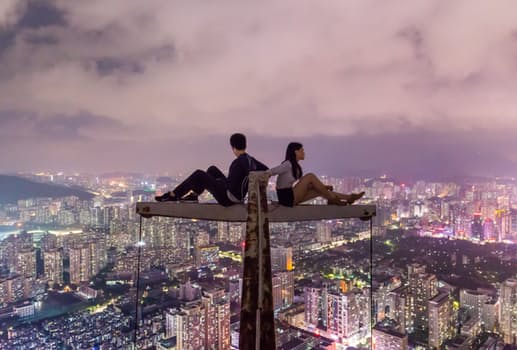It’s Not Just Beautiful, Why Cinematographers Are Storytellers Too
Many say that beauty is in the eye of the beholder, but what is it that makes beauty, in some forms, “all relative”? Most of us can agree that we find beauty in the Grand Canyon, or a sunset by the ocean, but is all beauty purely visual? Isn’t there also a beauty that exists through the emotions that cinematography evokes?
There’s a common misconception that the job of a cinematographer is to make a film look “pretty.” When you think La La Land or The Revenant (the most recent Academy Award winners of “Best Cinematography”), you think of beautiful sunsets on hilltops, or vast empty landscapes. While both films were undoubtedly “beautiful” in these ways, the eye of each film’s cinematographer surely saw beauty in something deeper.
Format Magazine writer Alessandro Tersigni claims cinematography is not just “making beautiful pictures,” but rather “creative visuals that reinforce a narrative and give the audience an emotional experience.”
Tersigni further explains how some things that he shoots that most would refer to as, “not very interesting,” actually “embody a certain emotion that is really powerful in the context of the film.”
The Cinematography Of Tangerine And Atlanta
While shooting the 2015 film Tangerine, famous for being shot on three iPhone 5S smartphones, Director Sean Baker and his collaborator Radium Cheung, chose to film with a wide angle adapter. By doing so, Baker and Cheung were able to “[accentuate] the flat, sprawling concrete that’s characteristic of L.A..” By allowing long strips of “sidewalk and storefront” to form parallel lines, the audience felt like they were on the “gritty street level.” This use of cinematography contributed to the overall mood of the film, rather than the aesthetics of the environment surrounding them.
In addition, FX’s recent hit comedy series Atlanta, prides itself in portraying “stylized realism.” In other words, to not allow the “aesthetic to outweigh the storytelling.” However, Christian Sprenger, the director of photography, argues that even though every visual decision is made “in service of the story,” he is still able to find intriguing visuals that don’t risk “clouding the audience’s experiences.” Sprenger further discusses how his team wanted to “delicately include the city as a character” without “cramming it down the audience’s throat.” His main goal was “capturing the city’s texture without being obvious.”
Conclusion
Alessandro Tersigni claims: “You can look at your dailies and think [they’re] not very interesting. But you know when it’s put into the context of the whole movie it’s going to have a certain emotional power that’s important to telling the story.”
All in all, while beauty is certainly a valuable component to achieving beautiful cinematography, the power of an image extends beyond aesthetics. Cinematography serves to push the story forward, and shape our perceptions of certain character or elements present in the film. So next time you’re watching a film, don’t let the pretty sunsets fool you: there’s a story on the horizon.



